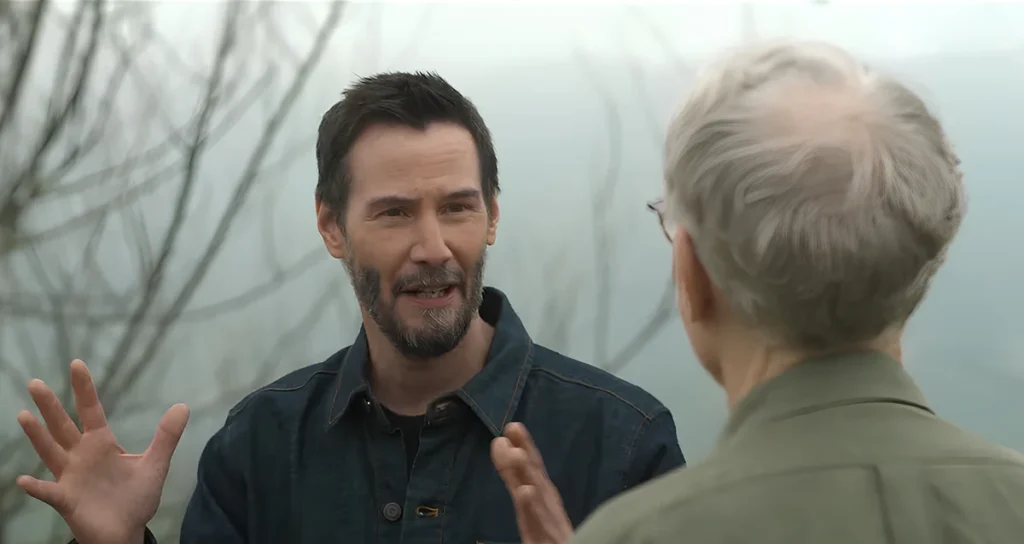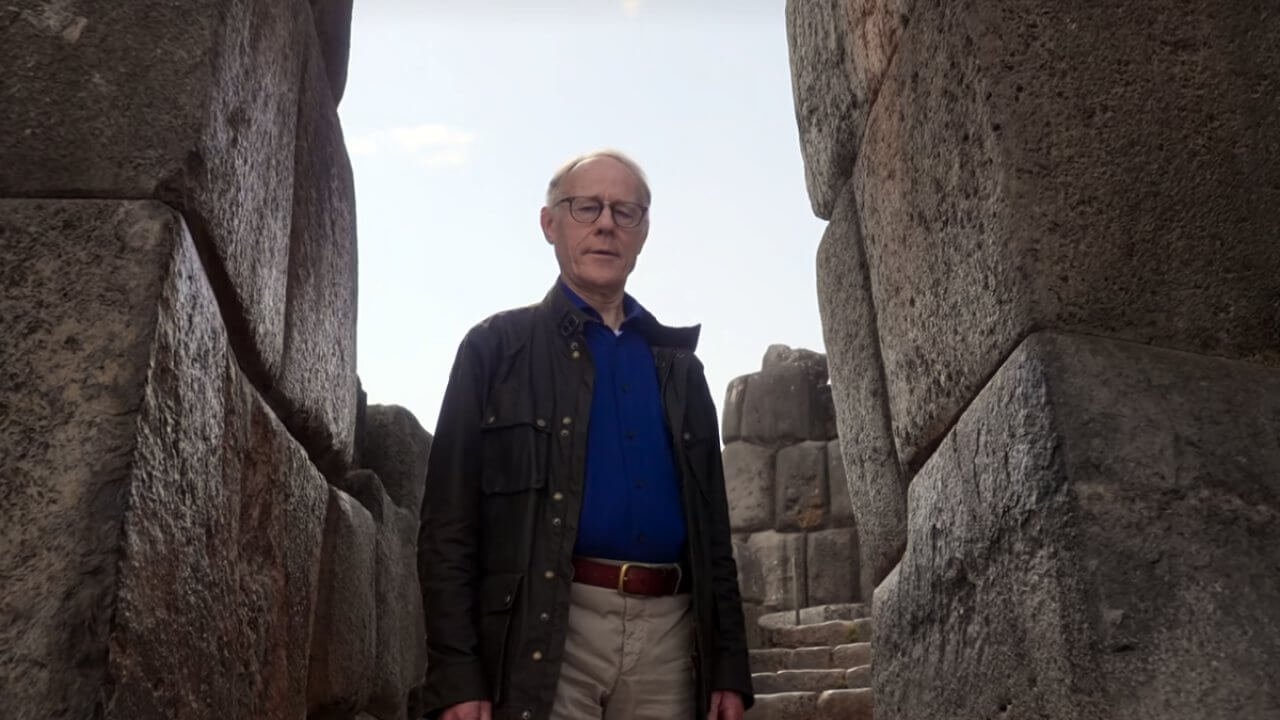Season 2 of Netflix’s Most Controversial Docuseries
Netflix docuseries Ancient Apocalypse season 2: The Americas airs 10/16, and is already causing a stir.
The previous season was a huge hit, and also stirred up a TON of internet drama surrounding Graham Hancock, and his theory of a lost civilization. Controversy, in addition to being interesting, is pretty good for ratings. Keanu Reeves has a cameo in the new season, which is further causing people to lose their minds. People really don’t want this story told for some reason.
The Guardian called last season “The Most Dangerous Show on Netflix“, saying it was a “truly preposterous theory”, that might create new conspiracy theorists, though it doesn’t quite articulate how that’s dangerous. The Society for American Archaeology, (SAA) a professional society for academic archaeologists, published an open letter to Netflix asking them to re-classify the first season as “science fiction” instead of anything starting with “docu-“, despite Netflix having many shows like Ancient Apocalypse in the “Ancient Mysteries” vein. (America Unearthed, Forbidden History, Lost Cities with Albert Lin, etc.) His critics finally take the lowest road, claiming that it is racist, because of previous 19th century authors with similar theories. Weaponizing the fallacy of “guilt by association” to imply that Hancock is racist, not because of any of his statements, but because he shares a similar hypothesis with others who were (presumably – these days I take this assertion with a huge grain of salt) white supremacists.
What to Expect from “The Americas”
Based on his lecture from earlier this year, and the title of the new season, I think that Graham Hancock is likely to explore signs of the presence of his lost civilization in the Americas, including genetic markers, monolithic architecture, and celestial alignments. He will talk about the DNA evidence that native South Americans share with Papua New Guinea, and the evidence for migration of ancient cultures to South America, predating the Clovis culture that is thought to have brought humans to the American continent, only to disappear around the time of the “Younger Dryas” ice age. (A second, shorter, glacial maximum after the previous “Older Dryas” glacial maximum had retreated) He will show monolithic stonework in the Andes mountains that is so fine you cannot slip a razor between the stones, and yet pieced together with irregular stones, rather than cut into straight sided blocks. And he will show the earthworks being discovered around the Amazon, evidence that an organized, monumental culture has been forgotten. Professional PhD anthropologist and scholar of Mesoamerica Edwin Barnhart is present in one episode, so expect some great action shots of Mayan temples, too.

The Drama
Full disclaimer – I am not unbiased. Graham Hancock and his theory of a lost civilization are the original inspiration for this site. After hearing Hancock on the Joe Rogan Experience podcast (multiple times) describe the legend of Viracocha and other stories from other cultures, of a hero who brings the fruits of civilization to primitive tribes, I decided to try to build a community of people seeking to preserve the heritage of human achievement, so that if/when the next cataclysm comes, we have a better chance of bypassing millenia of human misery and privation, to get back to a highly productive civilization as quickly as possible. I estimate that it only takes 3 generations (60-80 years) for the loss of scientific/technological knowledge to filter completely out of society, which is probably exacerbated by the extremely high level of specialization that an advanced technological society requires.
Hancock’s work for the past 3 decades has been tying together pieces of evidence in human myth, archaeology and astronomy, to try to support his hypothesis of a civilization that was lost in prehistory, so that we can figure out what happened to it, and prevent the same fate from happening to our own society. His several books have inspired scores of alternative reappraisals of the unexplained gaps and anomalies in the archaeological record. His critics, however, see him as dangerously misattributing evidence, and creating a false picture of the past that misinforms and confuses the public.
What is Graham Hancock’s Hypothesis?
Hancock believes that there was at least one significant human civilization that existed before the currently accepted beginnings of human civilization that was somehow lost to history. His primary physical evidence has been the existence of out-of-place-and-time achievements of monolithic architecture. He sees some of the great ancient stoneworks as being unachievable with any of the known tools and technologies available to the civilizations that those sites are attributed to, and in searching for an explanation, has determined that the best and most likely explanation is that they are older than currently accepted, and were created by a technology that has not been found.
Monolithic architecture is so important because it lives on after the organic materials and industrial materials melt away, and it is a sign if nothing else, of mass coordination, which requires sophisticated architectural awareness, mechanical advantage, logistics, and social organization, all elements of a complex body of knowledge, that would require many features of an advanced civilization. He has spent the past 30 years trying to find evidence for this theory, and has collected many correlating discoveries. In searching for a reason why we haven’t found direct physical evidence of this culture, he has determined that a major global cataclysm (most likely a comet impact or series of impacts that caused huge floods, massive sealevel changes, and a thousand year dip back into a colder climate) wiped out most of the evidence of the earlier epoch. The other reason we haven’t found any direct evidence is explained by the failure of modern archaeology to look in the right places, and to properly attribute scattered unexplained phenomena.

Questioning Motives:
I am not drawing a conclusion for or against Graham Hancock’s theory, but there are a few non-falsifiable features of the argument, that would be useful if he were the charlatan his critics claim. The challenges of dating stone artifacts means that any given date can be questioned, since it is not directly obtained from the artifact itself, but rather from the context of the available evidence surrounding it. Dates obtained from the oldest pieces of biological material at a site must always be seen as provisional, since any new discovery could push them back further, and unfortunately biological and industrial materials break down over time, meaning the bulk of any ancient evidence will be lost over time, corrupted by natural processes. Additionally, only a tiny fraction of the world, and an infinitesimal fraction of the underwater world, has been excavated, meaning that he can always say that the key piece of evidence just hasn’t been discovered yet.
Professional archaeologists are human, too. While Graham Hancock readily acknowledges that his work sits on top of the collected body of archaeological work, he still faces intense criticism, including unfair Ad Hominem attacks. So, why do so many archaeologists seem to have a deeply ingrained dislike of Hancock and his hypothesis? To be fair, academic archaeology is not a monolith, and we actually only know of the dozens of vocal critics, vs thousands of credentialed “legitimate” archeologists. In our current form of mass media, only the most aggressive rebuttals gain the attention of the algorithms, so it’s entirely possible that the bulk of the profession are happy to make cautious, dispassionate critiques, or keep their heads down and focus on their own work.
But what are the motivations of the debunkers? It’s possible that the love of the truth creates a disgust for liars, and a self-righteous denunciation is demanded by the faithful. But it’s also possible that darker motivations of jealousy guide their behavior. If you were to grind away at the altar of academic research, with enforced rigor and deference to authority, until finally receiving the blessings of the same claim to authority, I have a feeling you would be utterly scandalized by an interloper, questioning your version of the findings of the field, without displaying the same pedigree you have labored to achieve.
Conclusion
While I think it’s fair to be skeptical, I think Graham’s hypothesis is basically unfalsifiable, which means that you can not reject it out of hand. Regarding danger, I’m much more inclined to let people make up their own minds and to let the best ideas rise to the top. It’s a messy process, but truth will out eventually. Graham Hancock is presenting a novel hypothesis, and he is seeking out confirmatory evidence to build the most compelling narrative for it. This is entirely part of the scientific process. Moreover, not everything that he presents in a 30 minute tv episode can be exhaustively documented, though I find his printed work to be well-documented. That said, if he is intentionally ignoring disconfirmatory evidence, and not clearly calling it out, he is creating a fertile ground for attacks from the mainstream, and excitingly, the intense debate spurred by this series creates marketable activity on youtube and social media, and is actually a potential opportunity for new voices to take the reins and drive modern archaeology forward, getting clicks, views, and dollars for future research. I hope they don’t miss out, and I’m confident some will not miss the opportunity to ride the wave.



